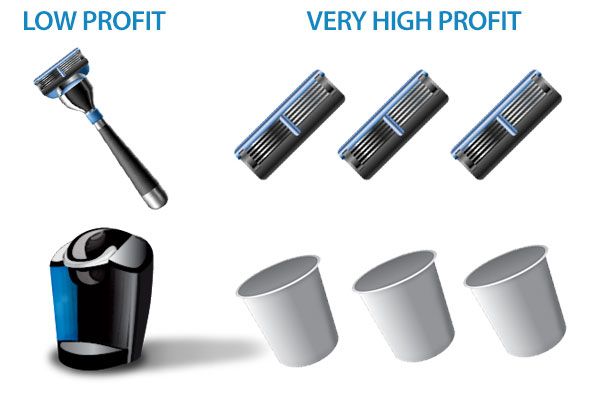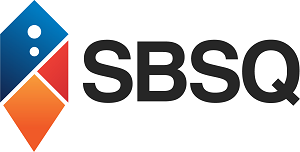The business model plays a crucial role in the development of every company. It is the best way to streamline business processes and create customer value.
It is the critical framework for defining and designing your business. So what is the business model? What types of business models are there?
Now, let’s read the article below, and you will have the correct answer.
What Is a Business Model?
A business model is a plan to run a business that generates steady profits in a particular sector. In other words, the business brings value to your customers.
It includes various categories, like product/service description, target market, and any fees needed for your business plan. The business model is essential for all companies in generating significant profits and attracting investment capital.
It allows businesses to experiment and model in different ways to structure the required revenue and expenses. Exploring potential business models will help pinpoint a viable business idea in the current social context.
Understanding business models is an advantage for developing effective strategies for businesses. It helps guide value creation and profit goals.
At the same time, it is the best way to preserve business competitiveness in the volatile capital markets.
1. Franchise

Franchising is a popular business model, helping to bring large profits to businesses. It is a license that grants the franchisee access to the franchisor’s proprietary knowledge, manufacturing processes, or business trademarks.
To successfully franchise, the franchisee must pay the franchisor a certain fee, including an annual license and start-up fee following the contract.
Franchising is helpful for some entrepreneurs who want to start a business. It has included regulations, sales methods, and ideas.
2. Retailer

The retailer is a household name in the ultimate supply chain. It is one of the popular business models and frequently interacts with people.
Specifically, they will buy finished products from manufacturers or distributors and then deliver them directly to customers or anyone in need.
3. Freemium
If you are looking to attract potential customers by showcasing your products, the Freemium business model is the ideal choice.
Despite its limited scope, it allows you to retain customers. This business model tries to move existing customers to a higher level and ask for payment.
Accordingly, customers may want to stay in freemium forever because they get excellent service benefits from being an upgraded member.
4. Manufacturer

The manufacturer is responsible for sourcing raw materials and producing finished products by leveraging in-house labor, machinery, and equipment.
A manufacturer can create custom merchandise or mass-produced products that are highly replicable. You can also sell goods directly to distributors, retailers, or customers.
5. Subscription
The subscription business model is the right choice for entrepreneurs trying to attract loyal customers to their organization. Operate this model by offering products or items and asking customers to pay continuously.
This business model is the ideal solution to exchange benefits for a fixed period or even all the time. Due to its digital nature and the requirement to access software, this business model is also standard for physical goods.
6. Bundling
If you are concerned about attracting potential customers’ costs, you can combine products to sell multiple goods to one customer. Leveraging existing customers by selling them different products is a smart choice.
Specifically, you’re pushing more merchandise to the same buyer by offering discounts on product packs. In other words, you’ve grown significantly in revenue with little to no marketing outreach costs.
7. Marketplace

The commercial market is quite simple. It requires you in exchange for hosting a platform to conduct business, and they receive corresponding compensation.
While trades can happen without a market, making every trade you make is undoubtedly more accessible, safer, and faster.
8. Affiliate
I recommend an affiliate business model for entrepreneurs who want to run their businesses through marketing and reaching a particular platform or entity.
Specifically, you pay or hire an entity for them to promote and advertise your product to potential customers. This payment is usually fixed and depends on the percentage of actual sales.
9. Razor Blade

The razor blade business model is a pricing strategy. In which a company sells a cheap item (like a razor handle) with a low-profit margin. And they make a profit from selling replacement blades.
This strategy is commonly available in consumer goods industries where repeat purchases are required to maintain the product. Some specific sectors must be the shaving industry or printer ink.
Customers are into buying cheap items, and then they are locked into purchasing consumable blades at a higher profit.
10. Reverse Razor Blade
The reverse razor blade business model involves a more distinctive business strategy. Accordingly, a company sells a popular product cheaply, like a razor handle. Its purpose is to continue selling consumable parts related to sold items.
This strategy will be particularly relevant for ink, printer, and razor businesses.
In principle, the initial purchase price of the product may be low, but the cost to replace related parts or consumables is high.
11. Pay-As-You-Go

Instead of charging a flat fee, some companies may implement a pay-as-you-go business model. Accordingly, the amount charged depends on the number of products used. Your company may charge a flat fee for service provision and a variable monthly payment based on what is used.
12. Brokerage
A brokerage business model that connects buyers and sellers without directly selling goods. Brokers receive a commission percentage for each transaction.
This model is most popular in the real estate sector. Accordingly, brokers are also prominent in construction/development or freight.
Conclusion
You’ve got information about the 12 common types of business models today. They can help you keep up with the development trend with different strategies.
Have you chosen the most suitable option for yourself? If you have anything else to discuss, don’t forget to leave a comment. Thank you for reading!

